If you are tired of invading deer destroying your flowerbeds and mowing down your perennials, then it’s time to start planting a few that deer resistant plants they tend to leave alone!
Deer can wreak havoc in gardens and flowerbeds, damaging or even killing off plants and vegetation in the blink of an eye. And the more they get used to finding the plants they love, the more often they come back to enjoy them.
It can certainly be frustrating for gardeners who spend a lot of time and a small fortune on plants. So what is the answer? Even though deer will often eat anything if hungry enough, the best place to start is by planting and growing the plants deer usually don’t like. And do we ever have some of the best deer resistant perennials featured in today’s article!
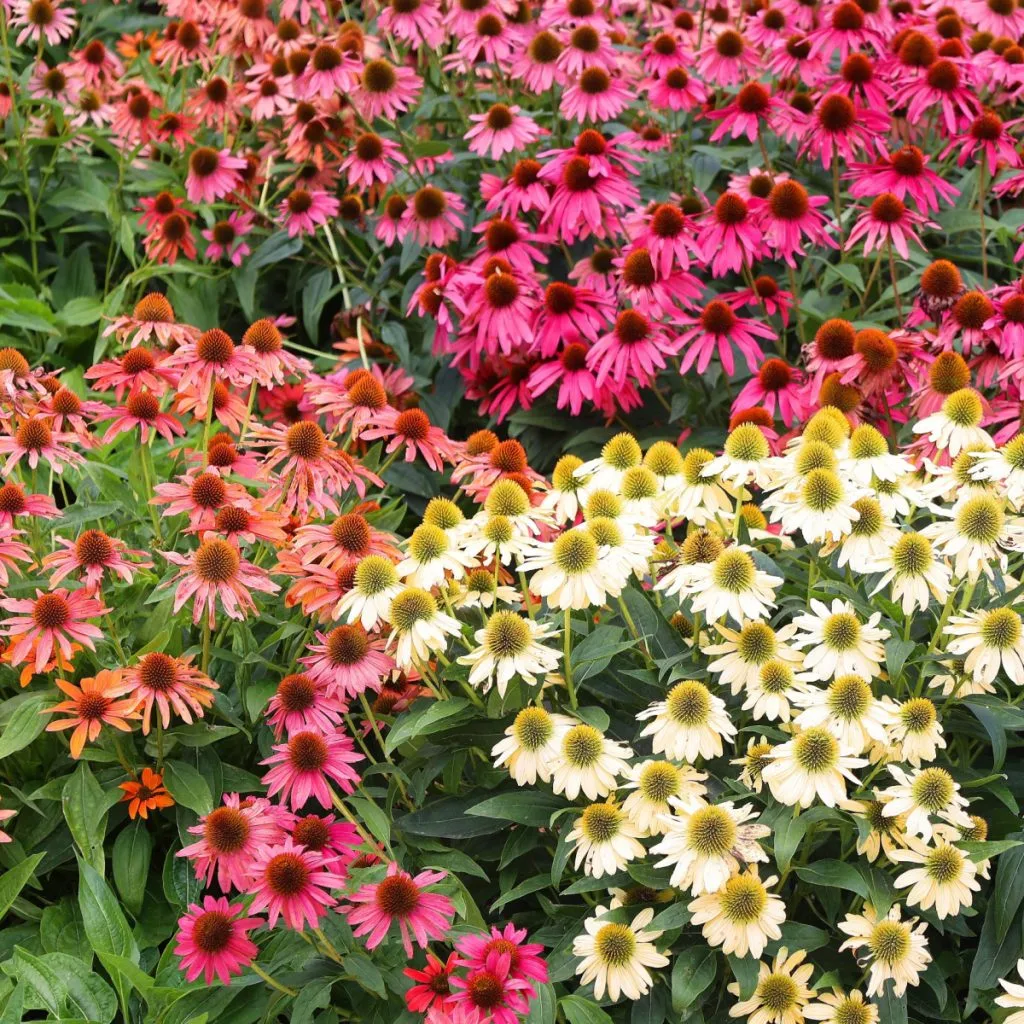
All seven of the varieties listed below will not only make your garden more colorful and beautiful, they also happen to be some of the least favorite of all plants for deer.
The Best Deer Resistant Perennial Plants – Help Keep Deer Away!
Coneflower
Coneflower is a perennial flowering plant that deer will usually stay completely away from. Varieties can be found that bloom in colors from pink and orange, to bright yellow as well. They tend to bloom in mid to late summer, and are great for bringing in butterflies, bees and other pollinators.
Coneflower requires full sun for 6 to 8 hours every day for best growth. It can and will survive partial sun conditions, but the bloom cycles will not be as intense. It can be planted via transplants or seed, and will self seed as well to come back year after year.
An additional advantage is that it grows equally well in poor soils. For this reason, fertilizing is rarely needed. Once the plant is established, it can resist a variety of adverse conditions including drought. Not only is coneflower deer resistant, it also is rabbit resistant as well!
Bee Balm – The Best Deer Resistant Perennials
Bee Balm plants attract butterflies, hummingbirds, and bees, but not deer! In fact, deer usually won’t come close to this plant because of its potent, minty-orange fragrance.
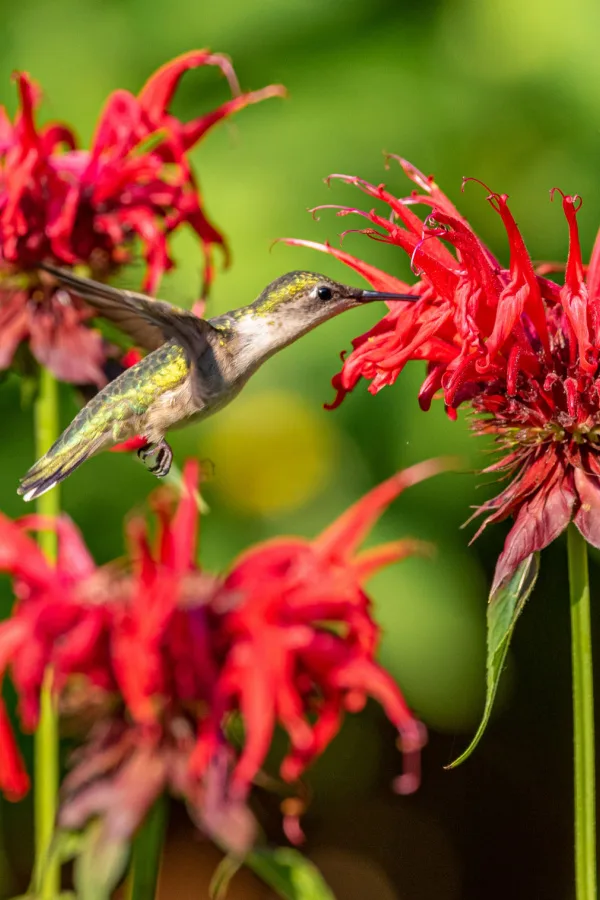
The red, purple, or white blooms of Bee Balm can grow both during the spring or fall season. The plant blooms and grows best in full sunshine. However, it can also grow in partial sunshine with fairly good results.
When planting Bee Balm, it prefers soil that is more wet than dry. Plant transplants 18 to 24 inches apart to allow plenty of space for growth. This also allows for good air circulation, helping the plant avoid the growth of mildew on its leaves.
Bee Balm requires adequate and frequent watering for the first few weeks after planting. Adding a few inches of mulch to the soil will help conserve adequate moisture, and help control weeds. Once established, bee balm is extremely low maintenance.
Liriope – The Best Deer Resistant Perennials
Liriope also goes by the common name of Lily Turf. This tough plant resembles a small grass and can grow up to 18 inches tall. The blooms of the plant can be white or lavender in color. Wonderful as a border plant or as a focal point in flowerbeds, this plant is an excellent “front-line” defense to keep deer out.
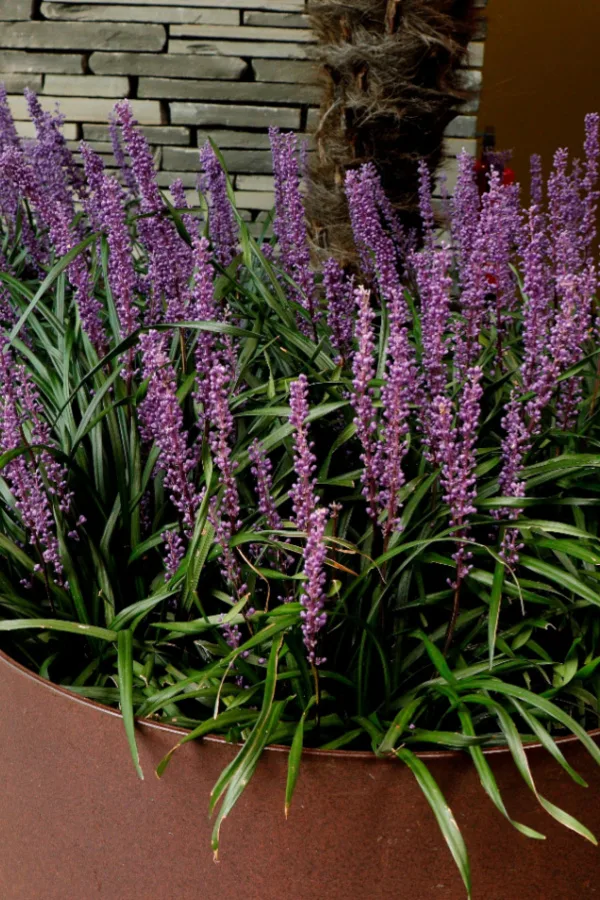
While the plant can grow well in full sun, it can also be grown in other partial shade as well – and usually with good results. Liriope plants can grow well in poor soils and will not need additional fertilizers to thrive.
Both transplants and divisions are good for propagating the plant. When first planting, water regularly to help the plant’s roots establish in the soil. Once established, this plant is extremely low maintenance!
It is one of the few plants that can also survive salt in the soil, and therefore is grown in certain coastal areas. This trait also makes it great for growing by sidewalks where salt is used to melt winter snow and ice.
Allium – The Best Deer Resistant Perennials
The Allium family also includes garlic and onions. However, there are certain allium ornamental varieties that are gorgeous to grow as flowers. Allium plants not only resist deer but also squirrels and chipmunks as well. The species comes in a wide variety of sizes, colors and types.
The blooming time for Allium is early summer or late spring. You can choose a plant for your soil type, as there are different varieties of Allium, with different grades of hardiness. The plants do best in full sun along with fertile, well draining soil. If there is only partial sun available, the plant will not bloom and flower nearly as well.
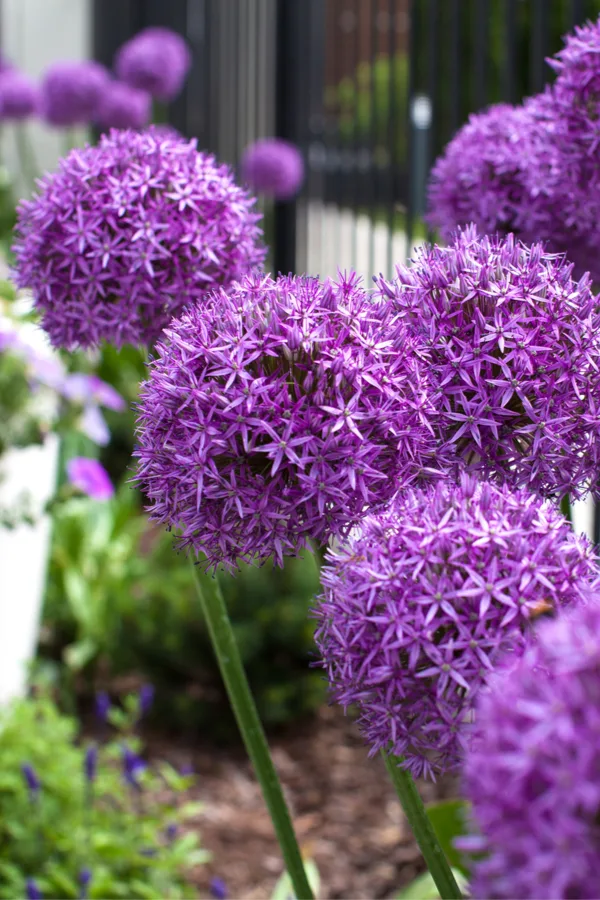
Planting all depends on the bulb size. A good rule of thumb is to plant bulbs to a depth of about two and a half times the size of the bulb. Plant allium at a distance of 3 to 8 inches apart for proper air circulation. Once established in the soil, Allium is highly drought resistant.
Coreopsis – The Best Deer Resistant Perennials
Also known as Tick Seed, the Coreopsis plant can grow in many different kinds of soil and is highly resistant to deer. The blooms of the plant primarily have a yellow color, but there are also other bi-color varieties that are available as well.
Coreopsis is also ultra resistant to hot and dry weather, and with its long-lasting bloom cycles, it can really add a big punch of color to the landscape. The full bloom season for the plant is mid-summer through the early fall season.
Coreopsis grows best where it gets at least 6 hours of sunlight every day. While the plant may also grow in partial sunlight as well, the results will not be the same. Coreopsis prefers well-draining soil and will struggle when trying to grow in wet and heavy soils. The good news is that the plant handles drought and low moisture well.

Dianthus – The Best Deer Resistant Perennials
Dianthus is wonderful for attracting pollinators. Their red and pink flowers attract butterflies,and bees as well as hummingbirds in droves. One thing is for sure, they will bring a lot of activity to your yard without attracting deer!
You can plant by transplants or seed. Sow seed for Dianthus during the spring season when there is no risk of frost. Affiliate Seed Link: Outsidepride Biennial Dianthus Barbatus Holborn Glory Flower Seeds
Full sunshine will ensure that the plant blooms within three months. Once plants finish their bloom, deadheading can often bring on a second bloom cycle in early to mid fall.
Moisture is a big keep to success for Dianthus. If conditions get too dry, additional watering is a must for good blooming cycles. Be careful not to over water. Too much water can and will clog the roots.
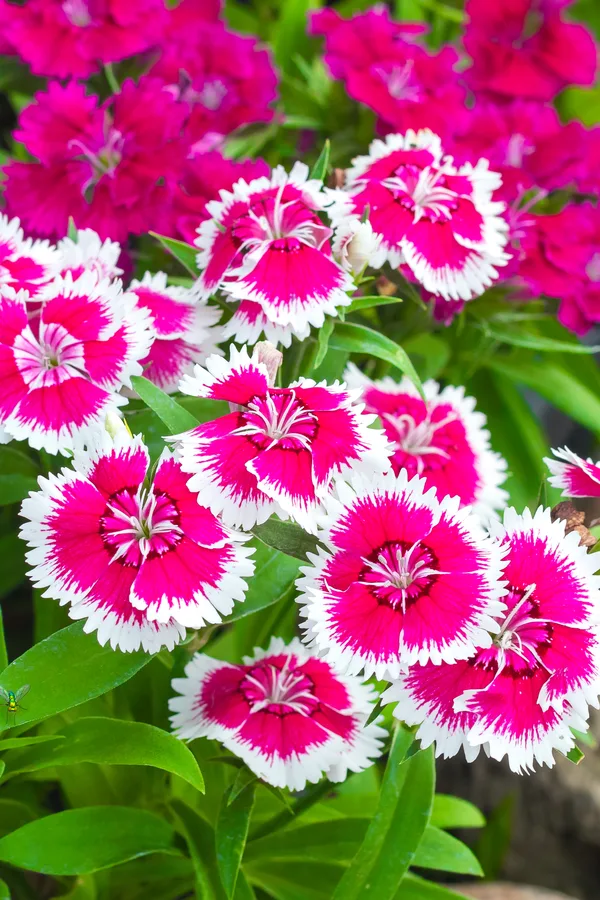
As for fertilizing, Dianthus will usually grow well without additional nutrients. Keep the plants 2 to 3 inches apart when planting to ensure good air circulation and better blooms.
Black Eyed Susan – The Best Deer Resistant Perennials
The thick texture and the fuzzy cover of the leaves of Black Eyed Susan protects the plant from deer. When planted near other perennials deer love, they often provide protection as deer keep away from where they see it growing.
Black Eyed Susan needs at least 6 hours of sunlight every day to grow and bloom best. It grows well in well-drained and moist soils and can tolerate both drought and heat when properly established.
Ensuring good space between the plants provides for better air circulation. This is important to keep mildew on its leaves from becoming an issue. Fertilize with an all purpose balanced fertilizer in the spring to promote good blooming habits.
Here is to helping keep deer away by planting some of the best deer resistant perennials around! For more on keeping deer out, check out our article The Best Deer Resistant Bushes To Plant – 5 Bushes Deer Will Leave Alone!
Simple Garden Life
Follow Our Facebook Page For Even More Great Tips! Simple Garden Life Facebook Page
Simple Garden Life is a website dedicated to keeping gardening fun, simple and enjoyable! We publish two new articles each week along with a new garden podcast episode every two weeks. This article may contain affiliate links.
